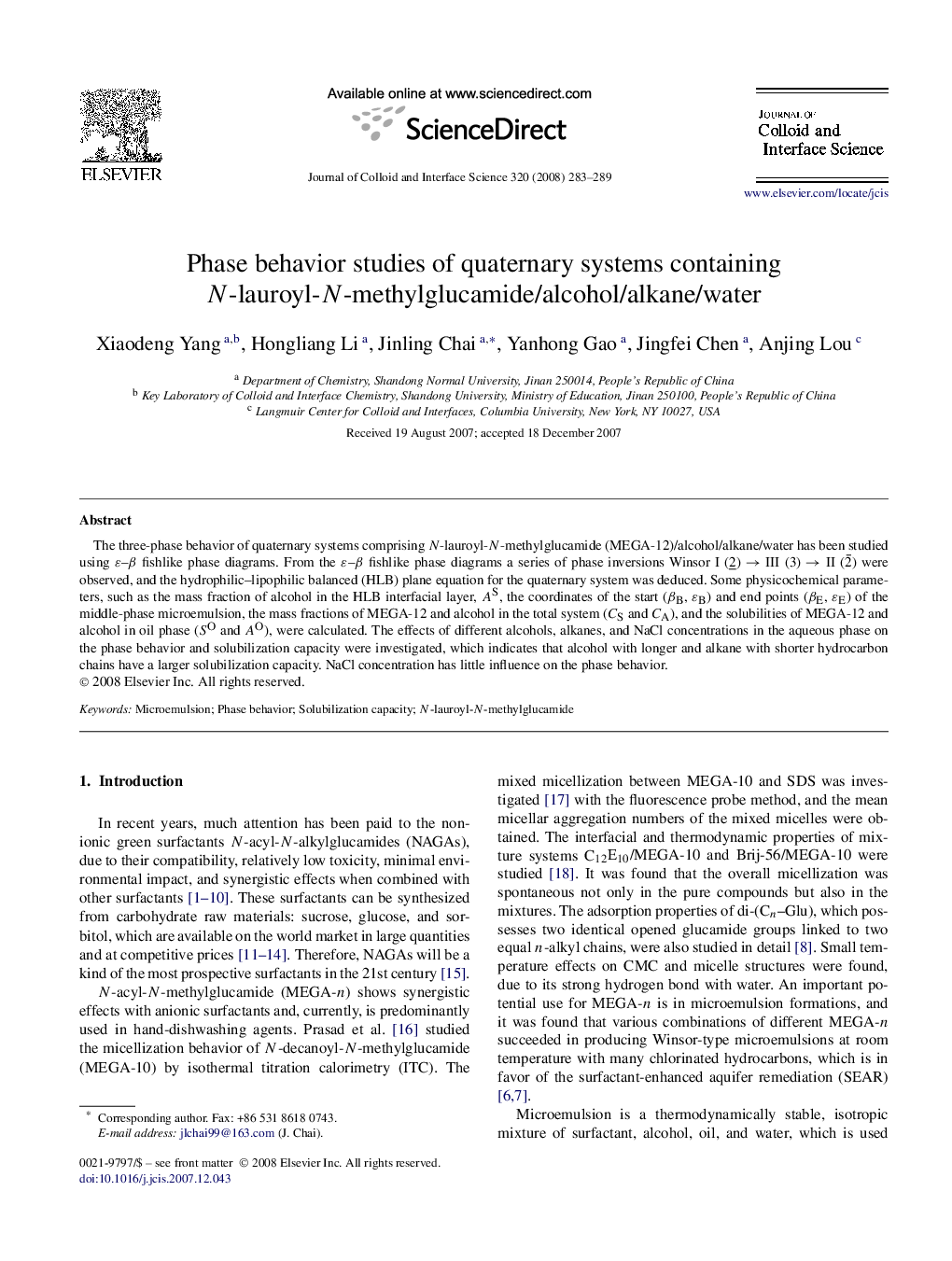| Article ID | Journal | Published Year | Pages | File Type |
|---|---|---|---|---|
| 611645 | Journal of Colloid and Interface Science | 2008 | 7 Pages |
The three-phase behavior of quaternary systems comprising N-lauroyl-N -methylglucamide (MEGA-12)/alcohol/alkane/water has been studied using ε–βε–β fishlike phase diagrams. From the ε–βε–β fishlike phase diagrams a series of phase inversions Winsor I (2) → III (3) → II (2¯) were observed, and the hydrophilic–lipophilic balanced (HLB) plane equation for the quaternary system was deduced. Some physicochemical parameters, such as the mass fraction of alcohol in the HLB interfacial layer, ASAS, the coordinates of the start (βBβB, εBεB) and end points (βEβE, εEεE) of the middle-phase microemulsion, the mass fractions of MEGA-12 and alcohol in the total system (CSCS and CACA), and the solubilities of MEGA-12 and alcohol in oil phase (SOSO and AOAO), were calculated. The effects of different alcohols, alkanes, and NaCl concentrations in the aqueous phase on the phase behavior and solubilization capacity were investigated, which indicates that alcohol with longer and alkane with shorter hydrocarbon chains have a larger solubilization capacity. NaCl concentration has little influence on the phase behavior.
Graphical abstractPhase behavior of quaternary systems formed from N-lauroyl-N-methylglucamide (MEGA-12)/alcohol/alkane/water was studied in terms of fishlike phase diagrams.Figure optionsDownload full-size imageDownload as PowerPoint slide
